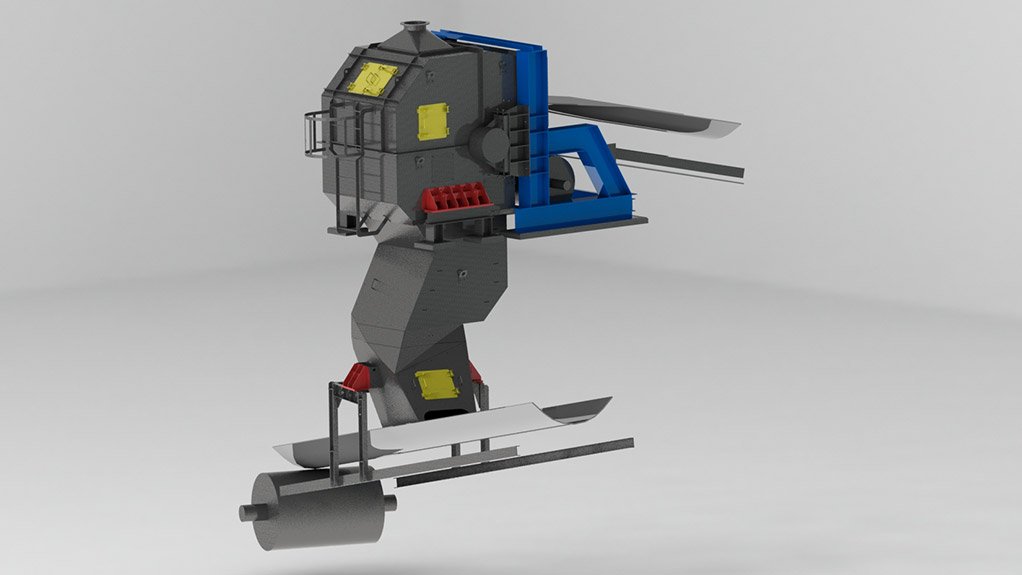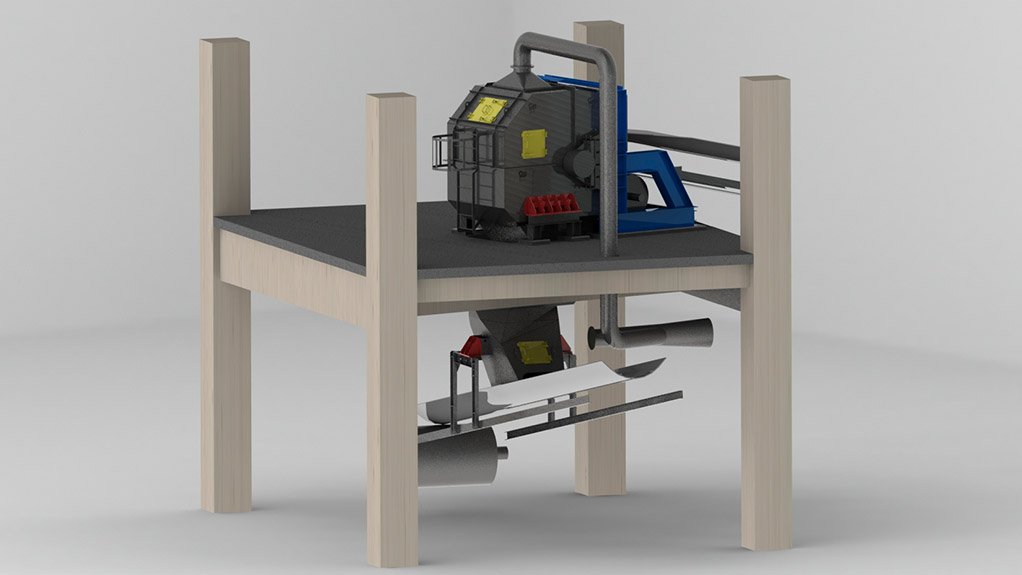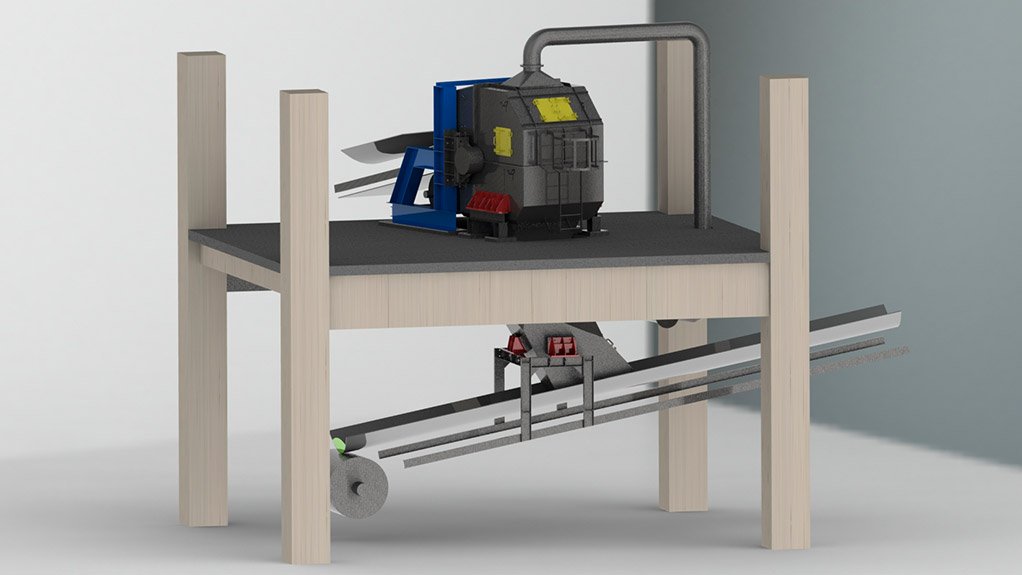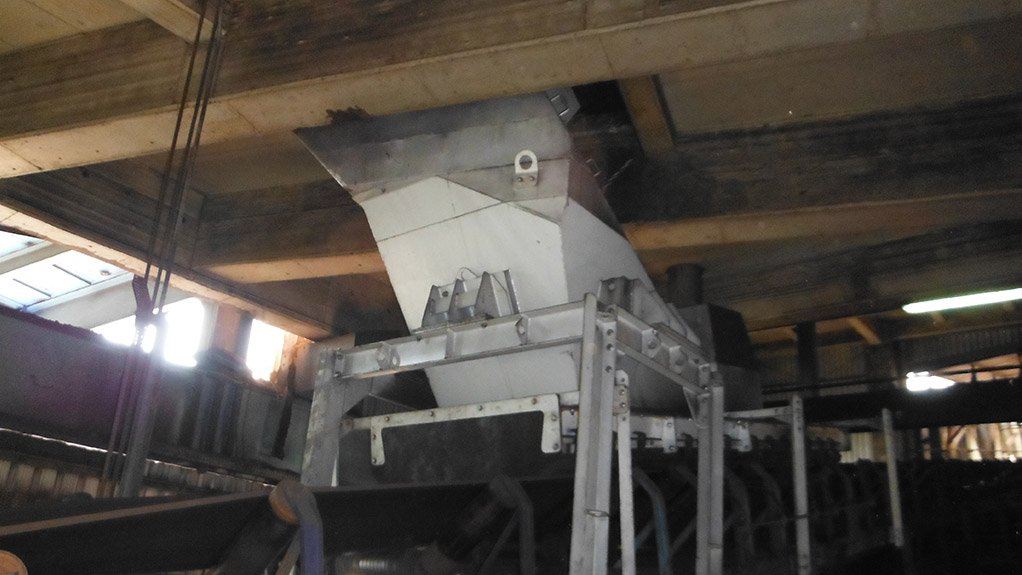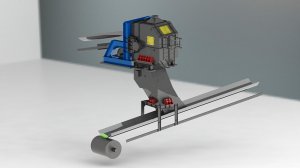- Weba Chute Systems (0.05 MB)
/ MEDIA STATEMENT / This content is not written by Creamer Media, but is a supplied media statement.
The recent installation of three Weba Chute Systems at the Isdemir Steel Plant in Turkey has significantly reduced noise levels as well as material degradation and dust levels.
Alwin Nienaber, technical director of Weba Chute Systems, says that the custom engineering of the transfer points addressed the challenges previously experienced at the plant.
Describing the operation, Nienaber says that incoming material is transported from barges to the raw materials handling section of the plant using a series of conveyors. When the plant was assessed by Weba Chute Systems’ engineers it was confirmed that the existing transfer points were old and there was an urgent need to reduce the degradation of the material as the high levels of fines were impeding the performance of the furnaces. In addition to this, the unacceptable levels of dust and noise pollution had to be addressed.
Weba Chute Systems are custom engineered to meet the specific criteria of each transfer point, and factors such as belt speed, belt width, material size, shape and throughput are taken into account. “Use of a custom design allows for the control of direction, flow and velocity of a calculated volume and type of material. This minimises the impact of the material, including belt presentation. This absolute control produces a significant reduction in material degradation as well as dust and noise,” Nienaber says.
The three new Weba Chute Systems are being used to move sinter, coke and iron ore pellets through the plant, and the materials handling system has been engineered with a redundancy component to ensure optimum reliability and continuous operation.
The first transfer point is a conveyor to conveyor chute with a belt width of 1 600 mm and a material feed of 2.1 m/sec. It has been designed to handle a maximum lump size of 60 mm and 2 106 tph of sinter, 522 tph of coke or 1 496 tph of iron pellets.
The other two chutes are bifurcated chutes with integral sampling systems. The transfer points are being fed at a maximum rate of 700 m3/hr and receive material from and present material to a 1 200 mm wide belt travelling at 1.98 m/sec.
“Weba Chute Systems use a ‘supertube’ effect with a cascade scenario, where 95% of the material runs on material at the same time. This results in a controlled tumbling motion as opposed to material rushing down the chute,” Nienaber explains. “Further, by engineering the internal angle of the transfer point to match the product with the belt speed we can guarantee a marked reduction in product degradation.”
Leveraging its extensive experience in custom engineered chute systems, Weba Chute Systems eliminated the conventional flopper door arrangement in the bifurcated chutes. This was replaced with a custom engineered articulating trolley section. “This innovative solution further assists in reducing material degradation and dust levels, with the added benefit that the high wear traditionally associated with a flopper door mechanism has also been eliminated,” Nienaber says.
The reduction in material degradation results in reduced fines, reduced dust and substantially reduced noise pollution. It also decreases wear resulting in longer life for the transfer point wearing parts. The wear rate of the chute lips has been monitored on an ongoing basis and after fifteen months of operation these show relatively no wear. This reduction in wear translates into reduced maintenance costs with associated savings.
Such was the seriousness of both the material degradation and noise pollution at Isdemir Steel Plant, that both the customer and Weba Chute Systems conducted studies to determine the actual reduction in each.
The old chute systems recorded a breakage rate of 25% on the minus 5 mm sinter. The level of fines in the minus 5 mm sinter increased from 7.78% to 9.71% after passing through the old transfer points. This 25% increase in material degradation was considered a major problem for the furnaces, however high degradation rates were recorded with coke having 69% rating and iron pellets 43%. Following the installation and successful commissioning of the Weba Chute Systems, the tests were repeated. Nienaber says that the custom engineered transfer points achieved a significant reduction in degradation with the sinter breakage rate dropping to 12.4%. This translates in to a 50% improvement.
The noise levels recorded with the previous chutes was 95 dB, and this had a detrimental effect on plant maintenance as the permitted exposure time for personnel at this extremely high noise level is between 30 minutes to an hour. This made equipment inspections difficult and thorough evaluation almost impossible.
Operating with the Weba Chute Systems in the plant has seen the noise level decrease by more than 10 dB to 83 dB which allows a period of eight hours to this level of exposure.
“The intellectual property of our engineers remains the crux of our innovative custom engineered solutions, however we do believe in complementing our practical knowledge with Discrete Element Modelling (DEM) simulation as a verification tool,” Nienaber says.
“Our primary objective remains engineering a tailor-made best practice chute solution for each and every customer,” he concludes.
Edited by: Creamer Media Reporter
EMAIL THIS ARTICLE SAVE THIS ARTICLE
To subscribe email subscriptions@creamermedia.co.za or click here
To advertise email advertising@creamermedia.co.za or click here










